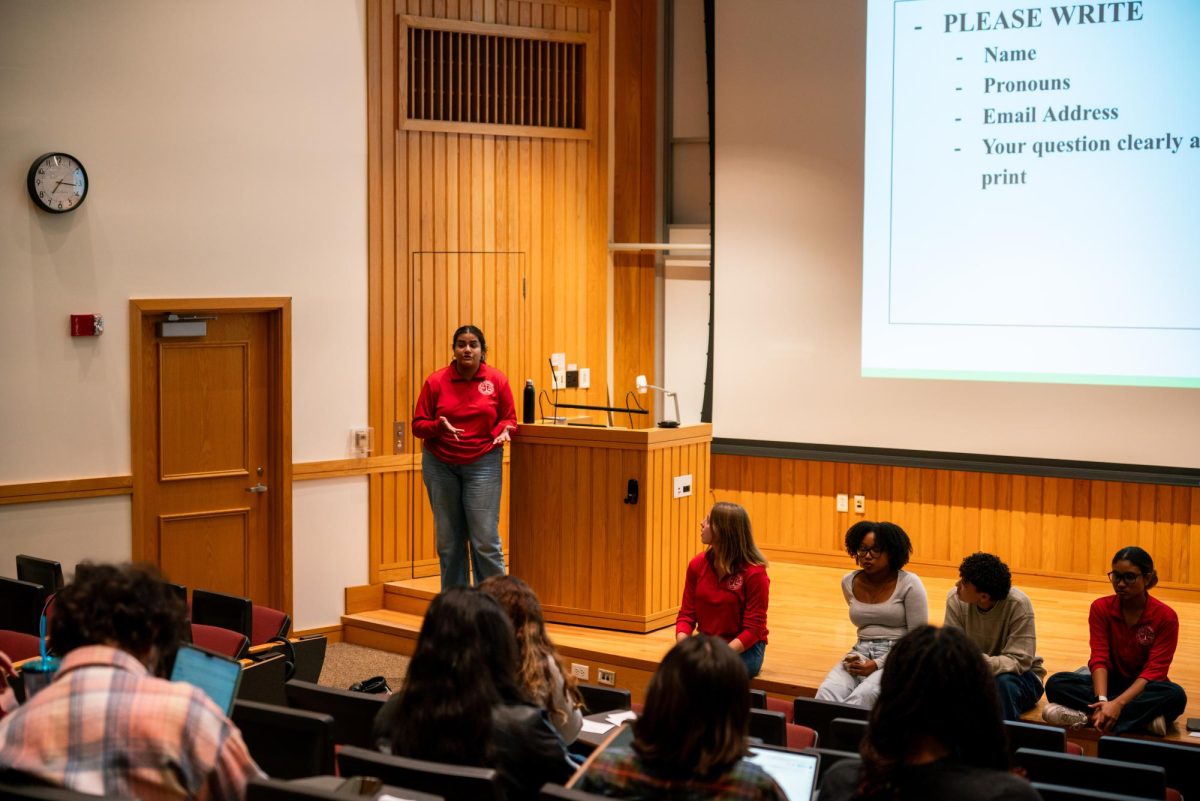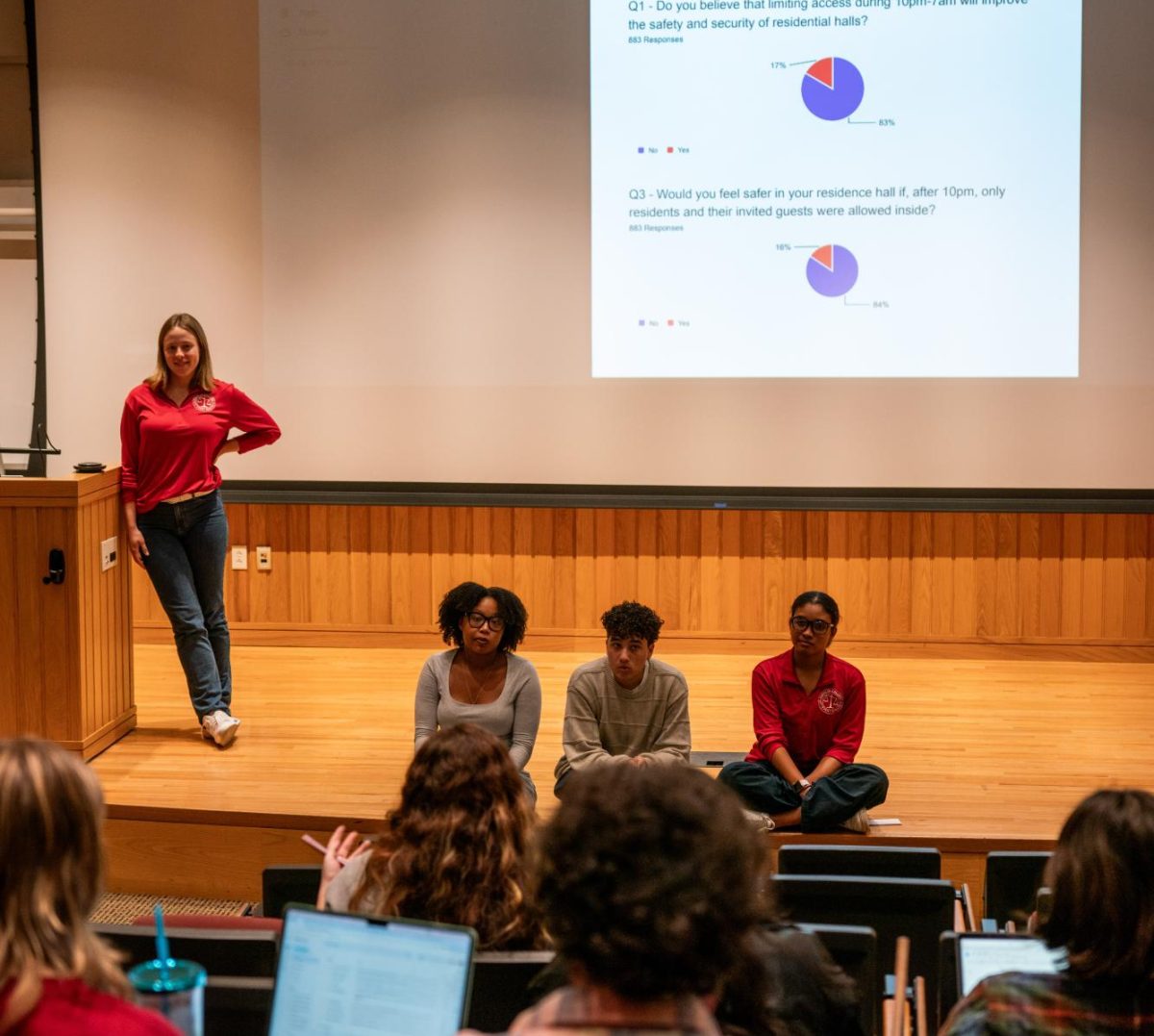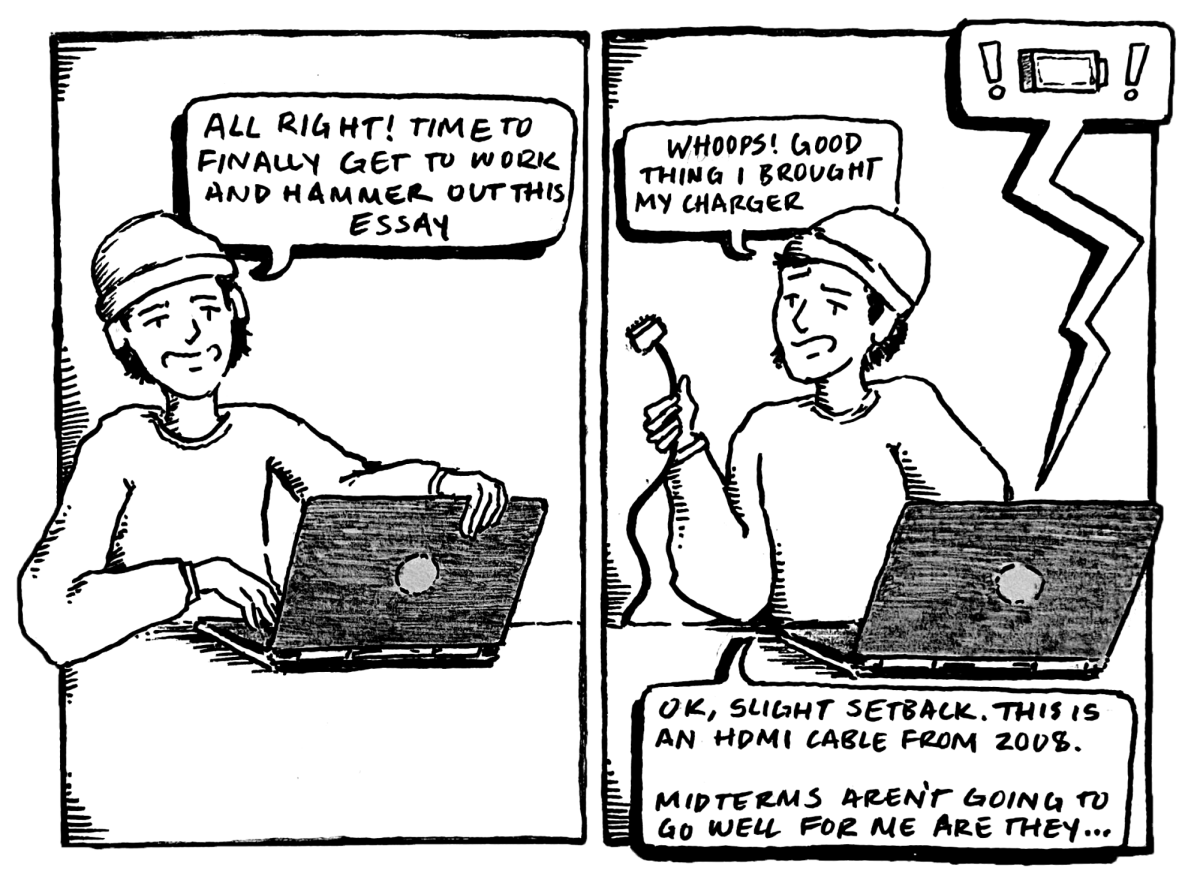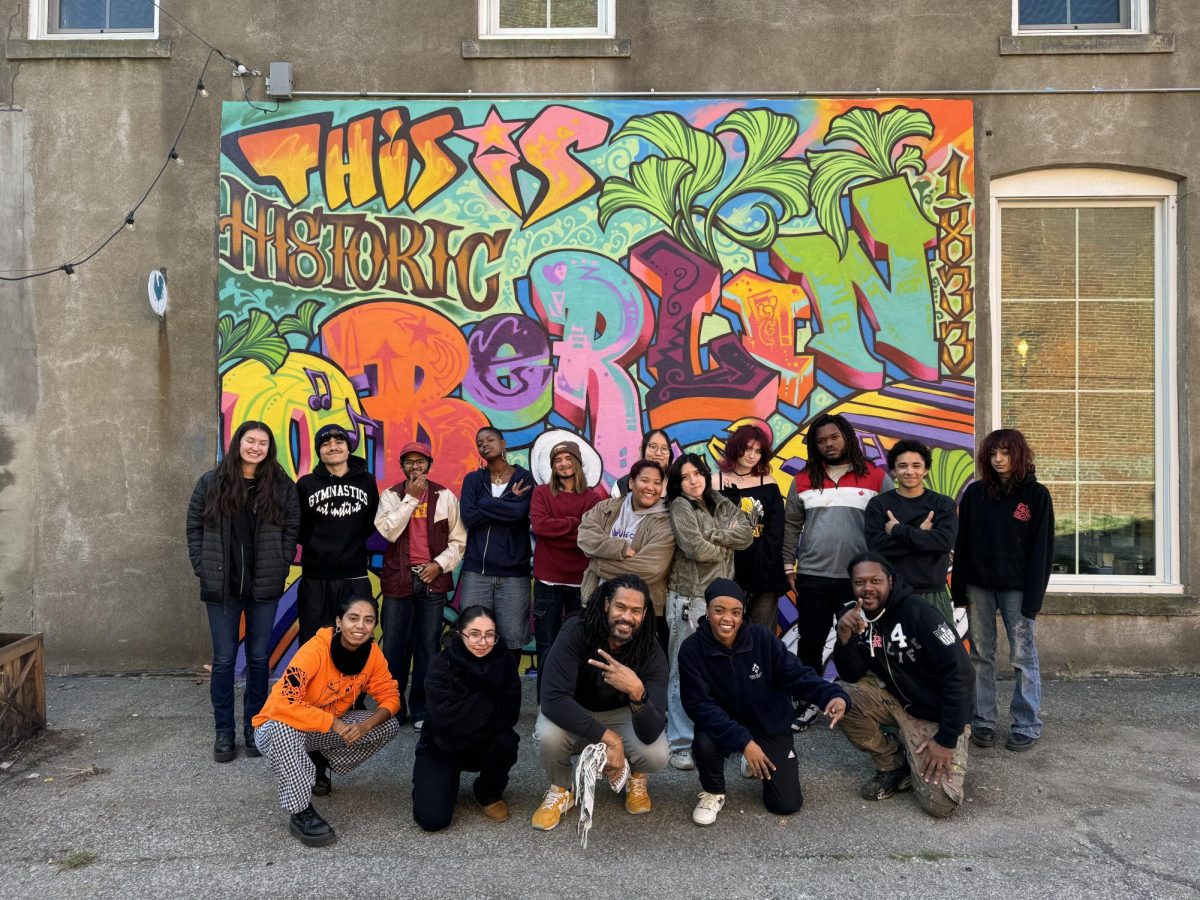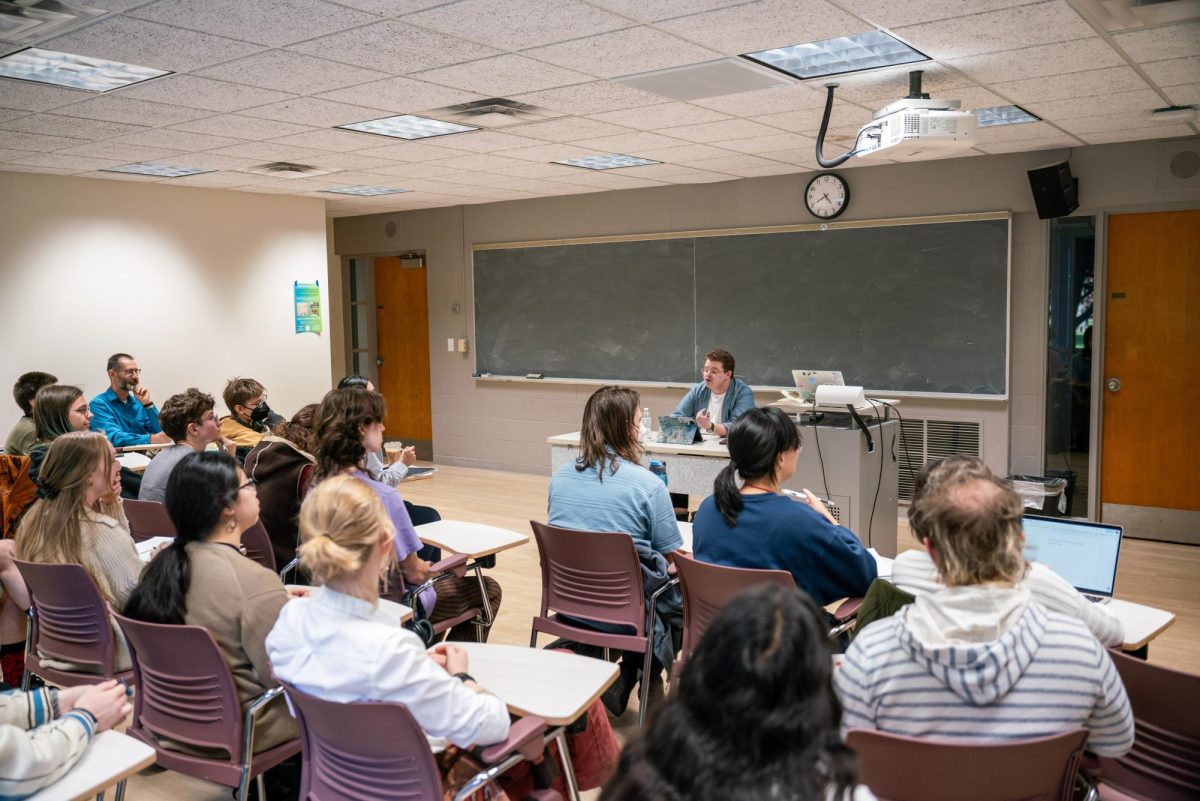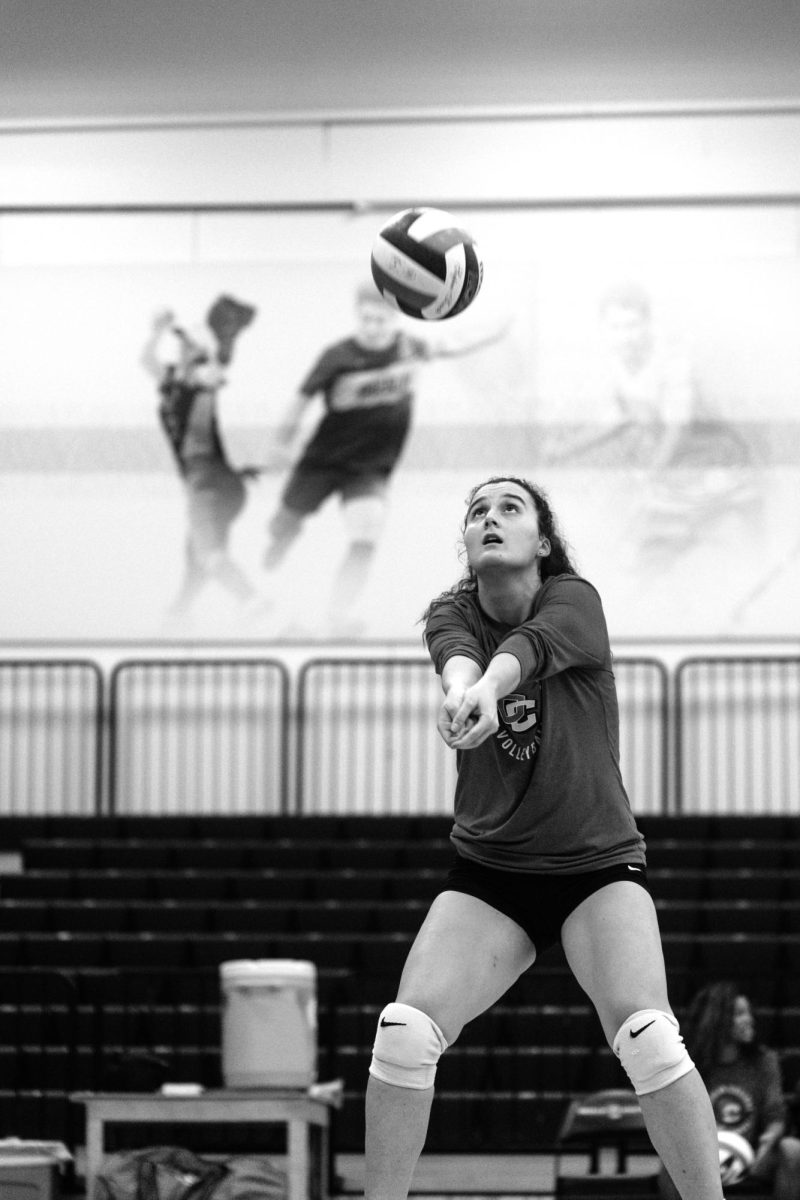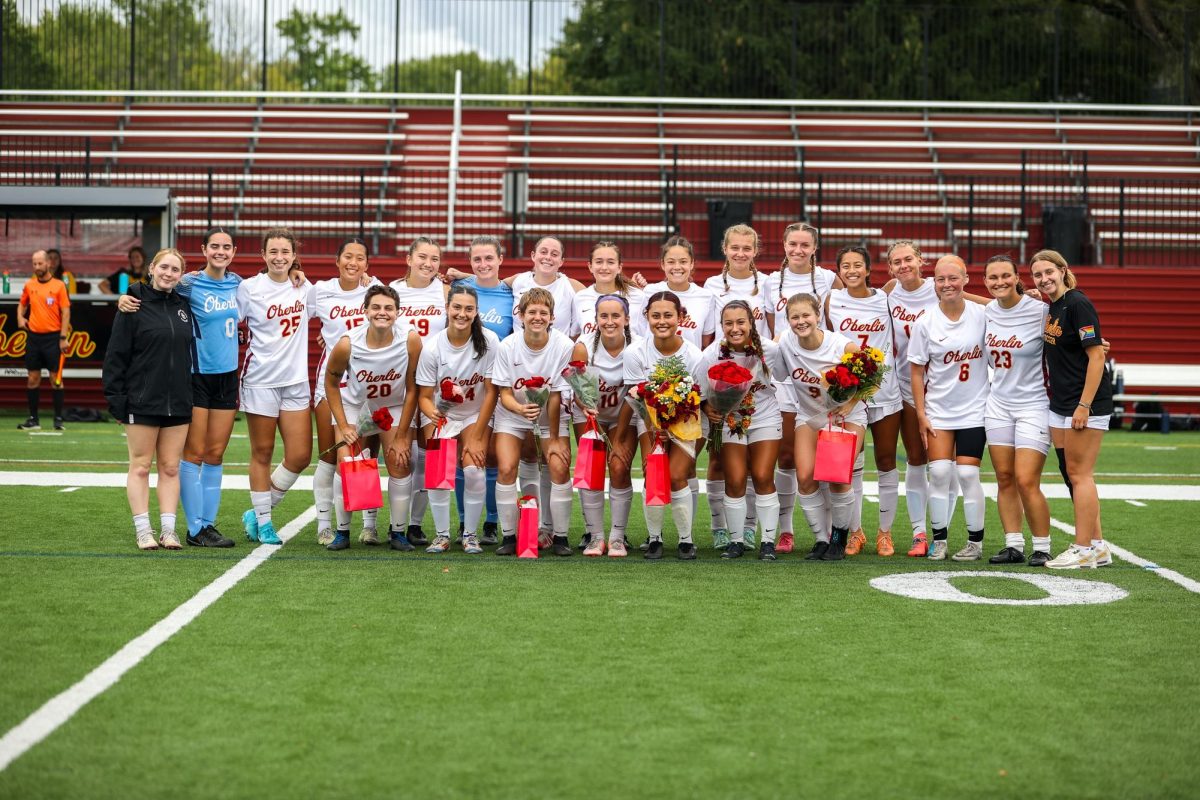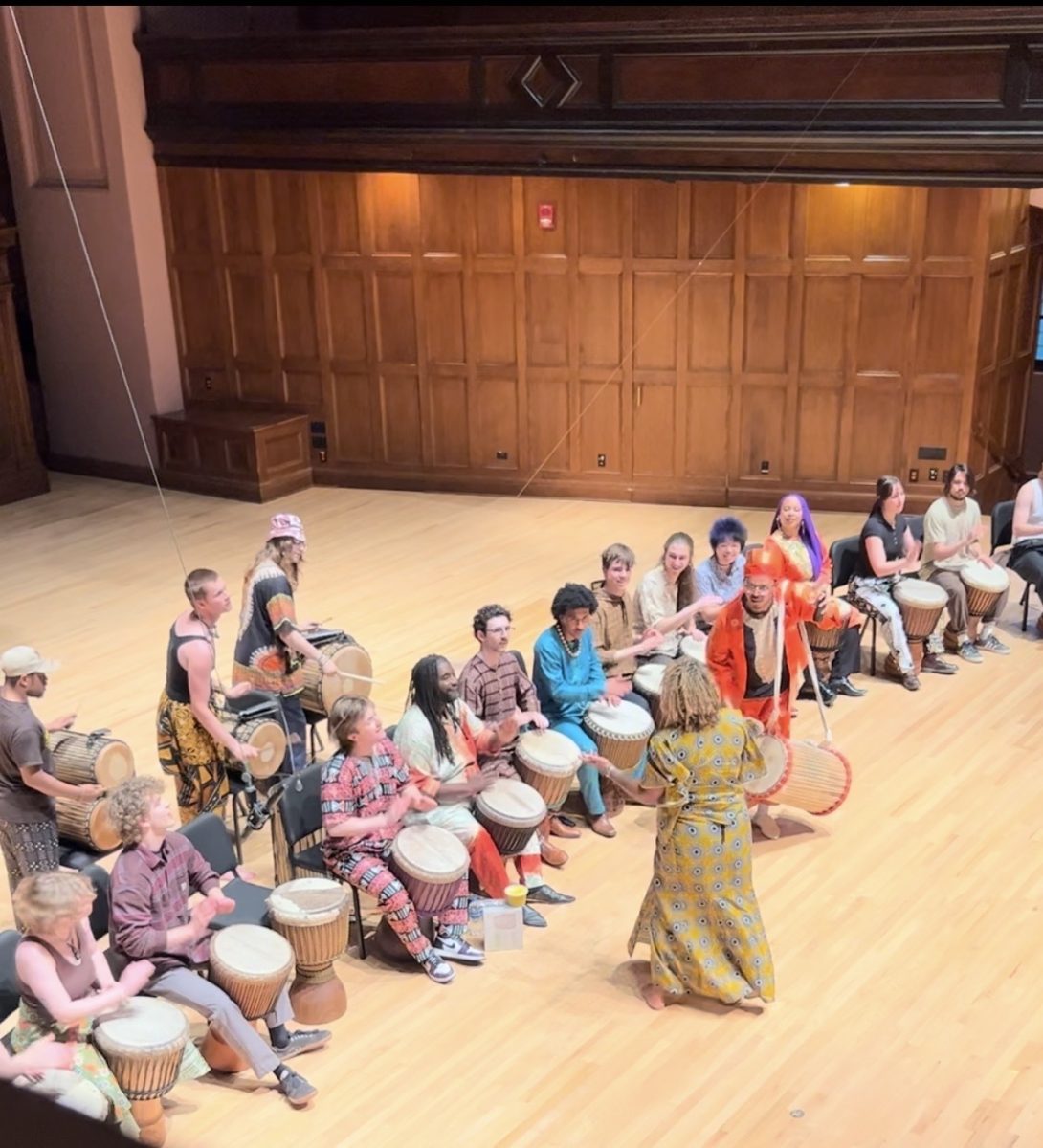Comic Art Given High Art Treatment at Exhibitionist Initiative
December 14, 2012
Last Friday, lovers of comic books and avant-garde art alike were treated to the Exhibitionist Initiative, the product of the first-ever collaboration between the Oberlin Comics Collective and the Exhibition Initiative. An expansive multi-purpose room at First Church was transformed into a DIY exhibition space organized to allow for free, fluid movement from piece to piece, from inner world to inner world of the artists on display.
As part of its mission, ExI aims to give student artists and creative individuals the opportunity to receive assistance with their project, to act as a vehicle for student artists on campus — especially those who haven’t had the chance to exhibit their work or don’t have the ability to do so on their own. So, when OCC member and College junior Conor Donahue proposed a joint project at the beginning of the semester, ExI members were immediately excited by the prospect of collaborating with a group that works in an art form not typically embraced by the gallery scene — nor widely known by the greater student community.
“Comic art is not ‘high art’ like painting or sculpture, which is meant to be seen in a museum or gallery setting with all of the pomp and circumstance that that entails,” said ExI Junior Co-Chair and College junior Dessane Cassell on the decision to hold the event in First Church. “The shift from a gallery space to a more intimate and non-traditional one made a lot of sense and honestly felt better suited to showcasing a kind of art that often engages in commentary of the world around us.”
In speaking with Donahue and other OCC participants, ExI members came to see comics as an intimate experience — in the palm of the reader’s hand, usually written and read in private — and strove to debunk myths of the “gallery scene” in their DIY presentation, true to how comic art is displayed in its most accessible form: the comic book.
“The Comics Collective compiles a lot of great work through its zine, so people can see work other people are doing in private, in their dorms, in their notebooks, … but their circulation often doesn’t get as wide as they want it to,” said Cassell. One table at the show featured zines by individuals, groups of artists and organizations like the Quarter Collective, WOBC and OCC itself, whose show coincided with the launch of their Fall 2012 zine of the same name.
While many pieces in the Exhibitionist Initiative also appeared in the OCC zine, the personal touches present in their original incarnations — notes and doodles in the margins of panels, whited-out blocks of text — added a certain intimacy to the gallery experience. The show and zine held completely separate submission processes: While OCC received zine-only submissions, ExI dealt with pieces entered into the show and setting up the First Church space itself. This gave artists a broader choice of mediums and a wider variety of methods for displaying their work.
Across two sides of the Exhibitionist Initiative space, triple-threaded wax twine stretched from wall to wall, onto which artists’ work was attached with binder clips (which are a curatorial convention of comic artists displaying their works in galleries). ExI used easels to display larger works on canvas and boards and placed book art on podiums; they affixed larger illustrations and paintings to the walls with adhesive hooks and the same binder clips used to string up the smaller works.
“Because comic art is about making statements, we wanted those statements to stand on their own,” said Cassell. In a further effort to keep the space as accessible and true to the nature of comic art as possible, no frames or glass casing were used.
Along the stretches of twine, ExI grouped comics together by style or subject matter — Cassell explained that certain themes revealed themselves as they reviewed submissions and found common tropes of fantastical creatures, college life, sex and sexuality, awkwardness, narcissism and commentary on the everyday. To identify the artists, simple sheets of computer paper listing their names in linear order were clipped to one end of each cluster of strings.
The show featured mediums that transcended the paneled image, including larger works on canvas that tied comic style into traditional painting techniques. College sophomore Oliver Levine’s neon-tinted canvas recalled Keith Haring but diverged from his style with its semi-abstract tangle of human legs, feet and noses. The lurid seductiveness of College sophomore Justine Neuberger’s painting, the largest in the show, dominated the space with a play on another pop-culture fixture: the pin-up girl. Book art by College senior Noah Steinman and College junior MJ Robinson added to the diversity of mediums, with brilliant and often chilling re-imaginations of what a book can be.
This Exhibitionst Initiative, with its thoughtful curation and enormous volume of creativity and talent, will remain intact at First Church until Dec. 16, after which ExI will move it to the Clarence Ward Art Library. Be on the lookout for copies of The Exhibitionist Initiative zine as well, which were released on campus earlier this week.






